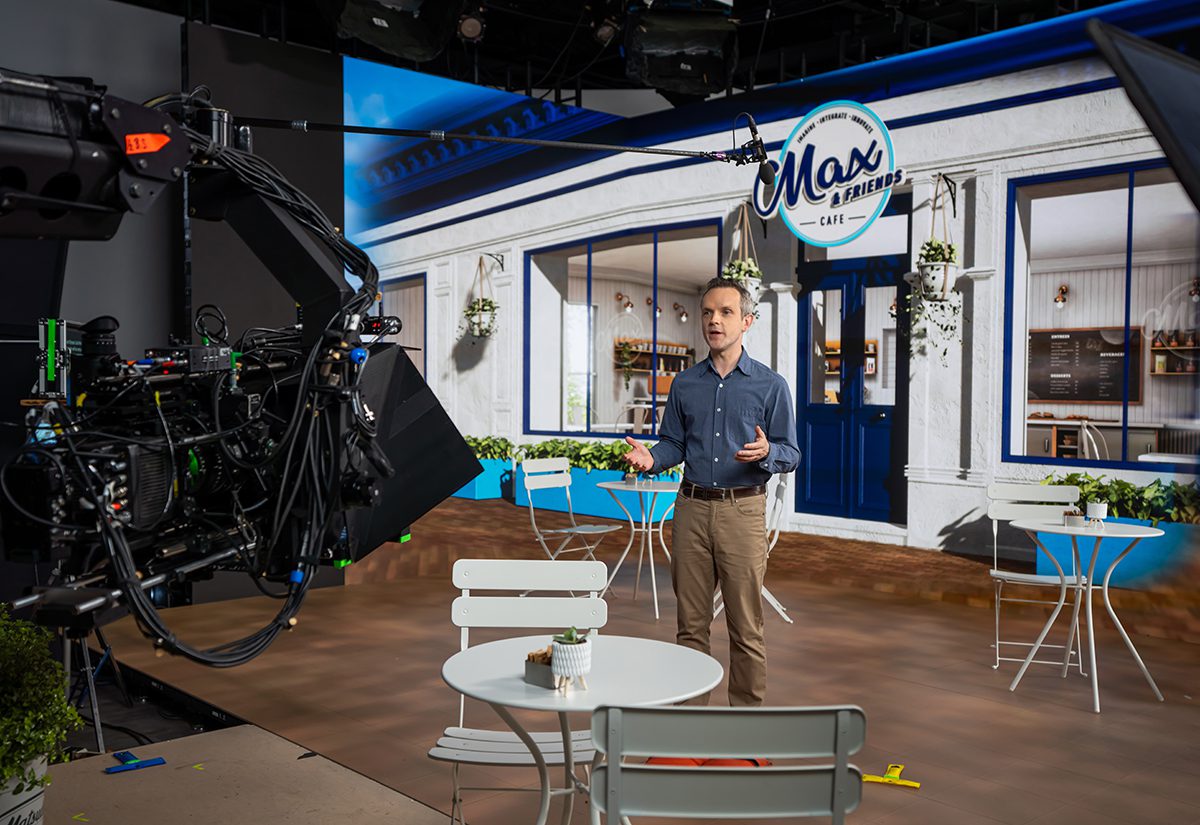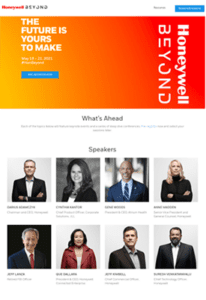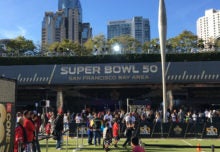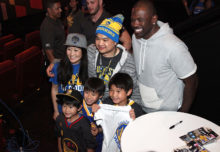Four b-to-b event experts on conquering the “reverse pivot”
If you didn’t produce or attend a virtual event in the last two years, are you really an event marketer? The industry spent the better part of 2020 and 2021 implementing and perfecting digital engagement and catering to audiences at home. But as in-person experiences continue to make a comeback, many event professionals are tasked with a new challenge: shifting the virtual events they developed during the height of the pandemic into real-world experiences.
This “reverse pivot” concept may sound simple on the surface, but just like transitioning from IRL to virtual, you can’t simply lift and shift your strategy.
To gather insights on what it takes to execute a successful reverse pivot, we tapped a group of marketers that are working on transforming their pandemic-era virtual events into physical ones: Genomics healthcare company Illumina, which launched its virtual Spark conference last April and has plans to go hybrid this year; Honeywell, which debuted its virtual Beyond Tech Forum last May (Jack Morton handled) and reported plans to execute a hybrid version last fall; Hyland, which turned its virtual hospitality program for C-suite customers into a combination of in-person and virtual experiences, a format it will stick with moving forward; and MuleSoft, which pivoted its Connect conference from a roadshow format to virtual last spring (On Board Experiential handled) and is working on getting back to live.
 More B-to-B Experiential Strategies:
More B-to-B Experiential Strategies:
- Intel Had Always Planned for a Digital-first CES: Inside its Pandemic-era Strategy
- How Salesforce is Embracing Safety, Tech to Elevate its Dreamforce Event
Divide and conquer.
That killer broadcast team that helped execute a great virtual event might not be as useful in a physical setting. Virtual events require different skillsets and know-how than physical ones, meaning brands may need a dedicated in-person team with on-the-ground expertise to successfully execute a reverse pivot. Time to reinforce the ranks.
“We’re looking at it as two separate events,” says Vanessa Schultz, associate director-marketing at Illumina. “It’s going to be separate teams with different skillsets, even different goals. [Virtual] is aspirational, inspirational, and in-person is actually getting people to take action, like policy makers that can help us from a business side. Our consideration is that these are two very different events.”
Timing is critical.
Attending a virtual event takes little effort, but hopping on a plane to attend an event in person is a different story. To ensure attendees find the value in leaving the comfort of their homes to attend an event, brands should confirm that the scheduling makes sense for the audience they’re targeting.
“Timing is really important,” says Christie Prenger, advertising brand manager at Hyland. “We’re making sure we have our finger on the pulse of what other brands are conducting events, whether they’re competitors of Hyland or not, but what else is out there? What is taking up calendar time on our target audience’s calendars?… You have to know what’s going on out there. You also have to know what’s going on in your organization. Hyland is a big operation and we run a lot of other events, sometimes overlapping audiences. So make sure that your event has enough runway to have the impact that you want it to have.”
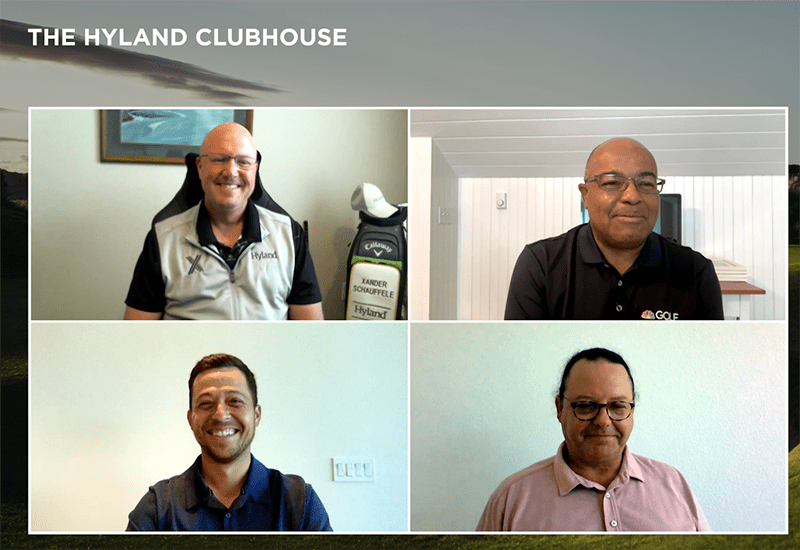
Hyland is pivoting its virtual hospitality program for the C-suite into a combination of in-person and virtual experiences.
In-person means qualified leads.
No one could argue the fact that virtual events expand a brand’s reach. Events that attract 2,000 people in person might attract 10,000 online. But it tends to be the ones who show up to an event in the flesh that really have a stake in the company that organized it. They’ve traveled, taken time out of their schedules and often made an investment to attend, so think of each one of them as a qualified lead—and engage them accordingly.
“Virtual events got a significant increase in numbers in terms of attendance, and that was great and helped us in terms of top-of-funnel and bringing people in that we could potentially nurture long-term,” says Joe Toubas, vp-global marketing at Honeywell. “But in terms of driving conversion into qualified leads and eventual revenue, quite a few were in the tail, meaning you could probably scrape around the edges and realize they were happy to attend, but they had no intent to buy anytime soon.”
Prepare a bigger budget.
It may sound like common sense, but brands need to be prepared to reserve a bigger chunk of the budget to produce in-person or hybrid events. Not only is there the venue, staff and meals to consider, but there will likely be the additional cost of in-person safety protocols, says Giselle Umland, senior manager-global strategic events at MuleSoft. “Besides health and safety, the biggest challenge [of pivoting back] will be the budget.”
Embrace smaller, more targeted experiences.
Pivoting a digital event with thousands of attendees into a physical experience will likely require paring down your audience to save on budget. And that’s not necessarily a bad thing. Experts say they’re shifting their focus to smaller, more targeted groups in their reverse pivot strategies to connect with attendees on a more intimate level.
“When we look ahead, we’re going to be creating a hybrid event where we’re going to continue to do the virtual forum because there’s great reach there,” says Toubas. “But we also think that there’s an opportunity with particular personas to bring them in, so we’re likely looking at a C-suite focus for an in-person event, and then expanding it to a broader group of folks through our digital platform.”
Schultz is on the same page. “We’re looking at hybrid, but not concurrent,” Schultz says. “Maybe we host a small group in person that we particularly want to drive some actions with, whether it’s purchasing or showcasing our new product or just education in general. So that’s been the idea of maybe 500 people—a really small group with a very targeted experience that can have an impact and then possibly translating that to hybrid and double dipping on some of the content we create.”
Rightsize expectations on speaker talent and specialists.
The beauty of virtual events is that organizers are often able to book talent they couldn’t have secured for a physical event because of the scheduling, fees and security protocols involved. What’s more, brand specialists who might pop into a virtual event to answer questions often aren’t able to attend an event in person. That makes rightsizing expectations both internally and for attendees paramount as brands return to the physical realm.
This sentiment hits home for Schultz, who counted Bill Gates among speakers at the virtual Spark conference (Jack Morton handled).
“We were able to tap speakers that we would probably never get in person,” she says. “We had Bill Gates as one of our keynoters. We had two Nobel Prize-winning women sitting down. We had Anthony Fauci’s boss, Francis Collins. So I’m channeling that to go back to our executives to rightsize expectations… It’s much easier for Bill Gates to hit record and show up on a screen than it is to fly and get security and all of that. I think getting speakers will be a barrier.”
Toubas agrees. “Some of the benefits you have of the virtual connection is you could bring in your engineer, you could bring in more people who wouldn’t be able to come and be a part of a customer meeting in person.”
Provide a frictionless experience.
When it comes to in-person networking in particular, brands should consider how they can remove barriers to create the smoothest, most comfortable experience possible for attendees who have become accustomed to simply turning on a screen and clicking a few buttons to participate.
“I look at it as what barriers can we remove to make those meetings more possible for people, setting those safety standards so that there’s a comfort level and they relax a little bit more to be able to have those connections,” says Schultz. “As much as I’ve loved meeting apps and technology to connect people before, I feel like that might get in the way as we return. So is there an opportunity for us to just make it as easy as possible? And I think starting small will make that a lot easier.”
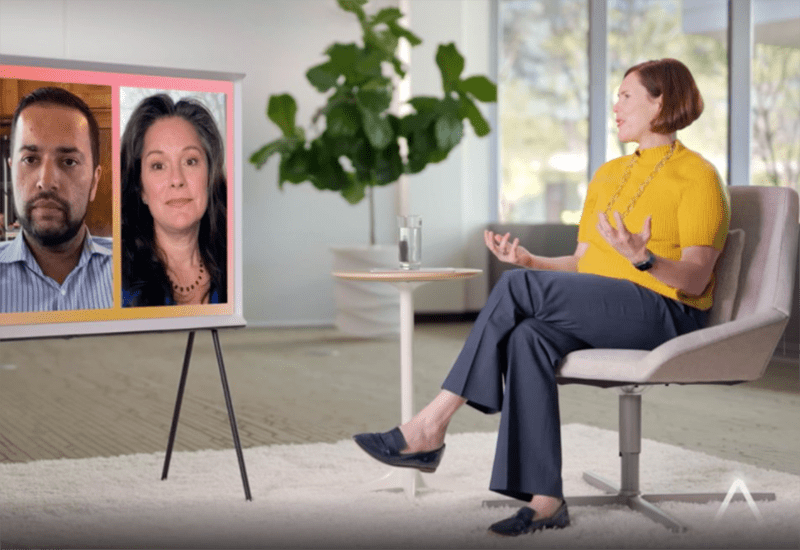
Illumina’s reverse pivot strategy includes removing barriers to make in-person attendance more accessible.
Use data to help inform the in-person experience.
Leveraging attendee data collected from a virtual event can, and should, help inform your reverse pivot strategy. An event is only as successful as its least satisfied attendee, after all.
“Start by looking at the data and metrics you collected from the digital event,” says Umland. “Digital events gave us more detailed data to own the customer experience. My tip would be to lead with the customer outcome in mind. What do you want your attendees to take away from the event? Map out the attendee experiences, journeys and connect them directly with business outcomes.”
*This article was originally published in 2021 and is updated periodically
This story appeared in the September 2021 issue

